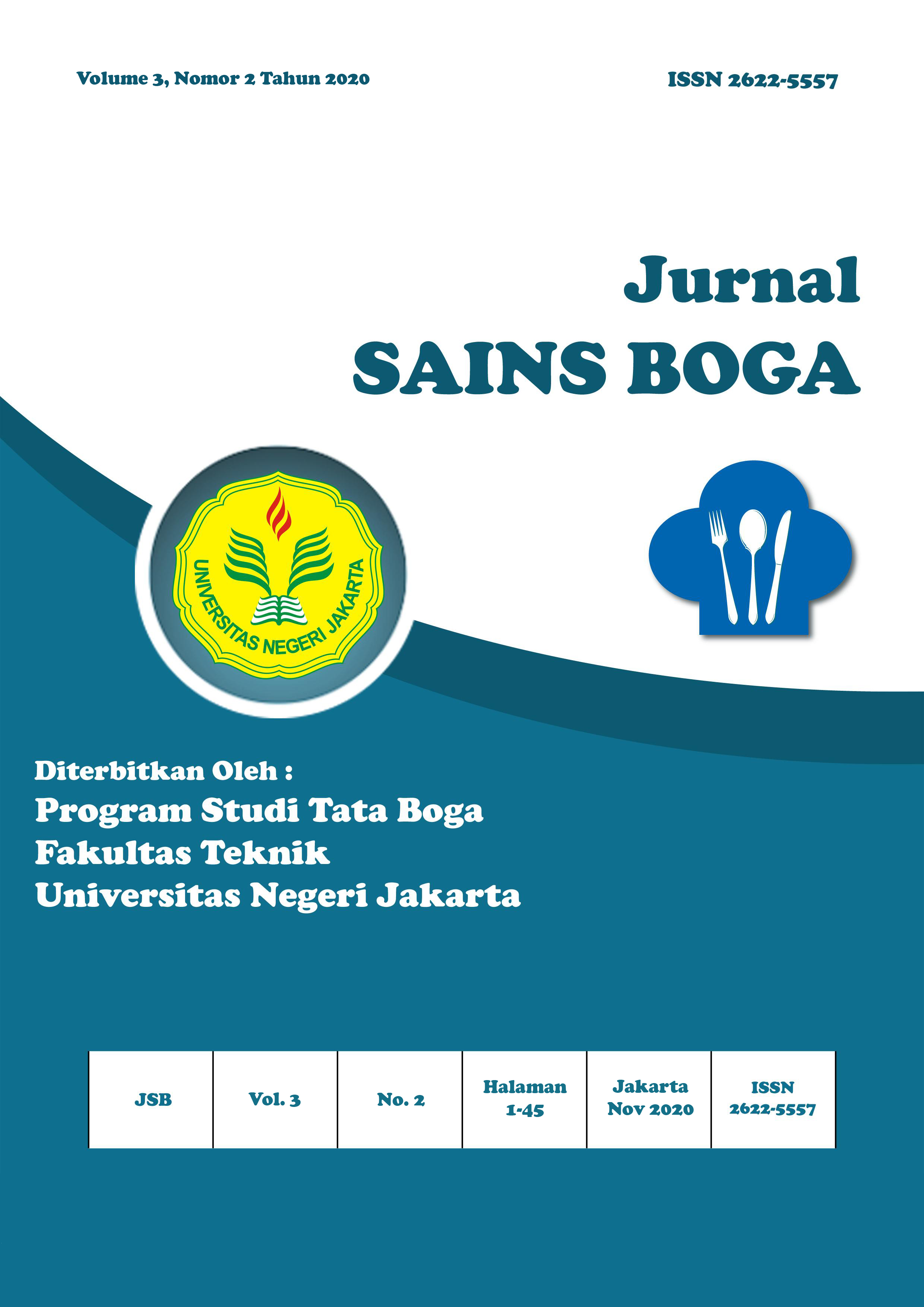Pengaruh Teknik Pendinginan Pada Pembuatan Menchi Katsu Tahu Ikan Terhadap Daya Terima Konsumen
Pengaruh Teknik Pendinginan Pada Pembuatan Menchi Katsu Tahu Ikan Terhadap Daya terima Konsumen
DOI:
https://doi.org/10.21009/JSB.003.2.04Keywords:
Teknik Pendinginan, Menchi katsu tahu ikan, Daya terima konsumenAbstract
This research aims to determine and analyze the effect of cooling technique in the making of tofu and fish menchi katsu to the acceptence of costumers based on aspects of color, flavor, aroma, and texture. This research was conducted in the laboratory of pastry and bakery processing at the culinary education study program of State University of Jakarta. This research started from the begining of May 2019 until December 2019. The method used is using experimental method. The sample in this study were tofu and fish menchi katsu with the additional cooling technique of 30°C, 8°C and -9°C, which were then given to 30 rather skilled panelists whis assessed all of the aspects. Based on the results of hypothesis test by using friedman test and tuckey test of aspect of color, flavor, and aroma it was proven there was an effect of cooling technique in the making of tofu and fish menchi katsu. Whereas in aspect of texture that there was the only one with effect. Generally, the conclusion of the results of the result of organoleptic assessment that tofu and fish menchi katsu with the most preffered cooling technique of tofu and fish menchi katsu from the aspect of color, flavor, aroma, and texture was with freezer temperature of -9°C.








